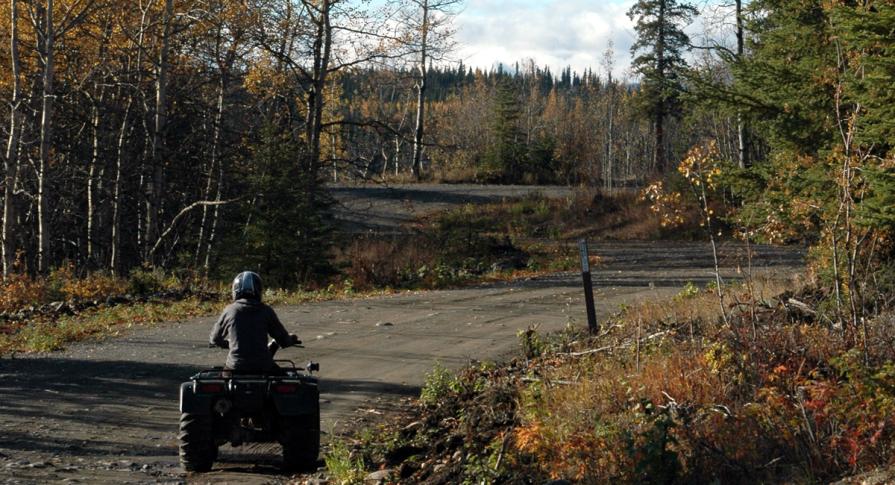
ANCSA 17(b) Easements
17(b) easements are rights reserved to the United States and may also be reserved to and from communities, airports, docks, marine coastline, groups of private holdings sufficient in number to constitute public use and government facilities. They take the form of 60-foot wide roads, 25- and 50-foot trails, and one-acre sites for short-term uses. These rights are reserved when the BLM conveys land to an Alaska Native corporation under the Alaska Native Claims Settlement Act (ANCSA). There are no 17(b) easements across public lands.
The purpose of most 17(b) easements are reserved to allow the public to cross private property to reach public lands* and major waterways. Using 17(b) easements does not allow the public to use the private lands these easements cross. It is very similar to the street in front of many homes. The public has the right to travel on the street, but they do not have the right to dump litter on private property or trespass on private lawns.
*Publicly owned land means all federal, state, or municipal and borough lands or interests and submerged lands as defined by the Submerged Lands Act. This definition of public lands also includes lands selected by, but not conveyed to, an Alaska Native corporation.
The identification process begins when a Alaska Native corporation prioritizes selected lands for conveyance. The BLM reviews the lands for public easement needs and requests comments from the Alaska Native corporations, the State of Alaska, and interested parties. The information is analyzed using the 17(b) easement criteria and the results are documented. The BLM includes the approved 17(b) easements in an appealable decision and the lands are later conveyed to the Alaska Native corporation with the easements reserved to the United States.
How can I tell the difference between private land and public land, and how do I know where 17(b) easements are found?
Prior to heading out to public lands, visit your nearest BLM public room to determine who owns the land you intend to cross to reach your destination. Master title plats show land ownership, but they don’t show 17(b) easements. Lands that have been conveyed to a Alaska Native corporation are privately owned by that corporation, but public lands that have been selected by the corporation and not yet conveyed are still public lands and may be used by the public.
The 17(b) easement allows the public to cross conveyed lands, but the route reserved in the conveyance document and the uses allowed on that easement must be followed. The public room will assist you with looking up the title documents, which will show you the easements reserved. The documents conveying the land to the Alaska Native corporation will identify the 17(b) easements, which are shown on easement maps, but the easement maps do not depict land ownership.
Can 17(b) easements be terminated?
Yes, but only the BLM can terminate a 17(b) easement, using the following process. When the BLM or the easement manager determines that an easement is no longer necessary, the BLM must provide public notice that the easement is proposed for termination and request comments from the public. After reviewing the comments and determining the easement is no longer required, the BLM issues an appealable decision terminating the easement. The BLM terminates the public easement when the decision is final by issuing a release of interest.
